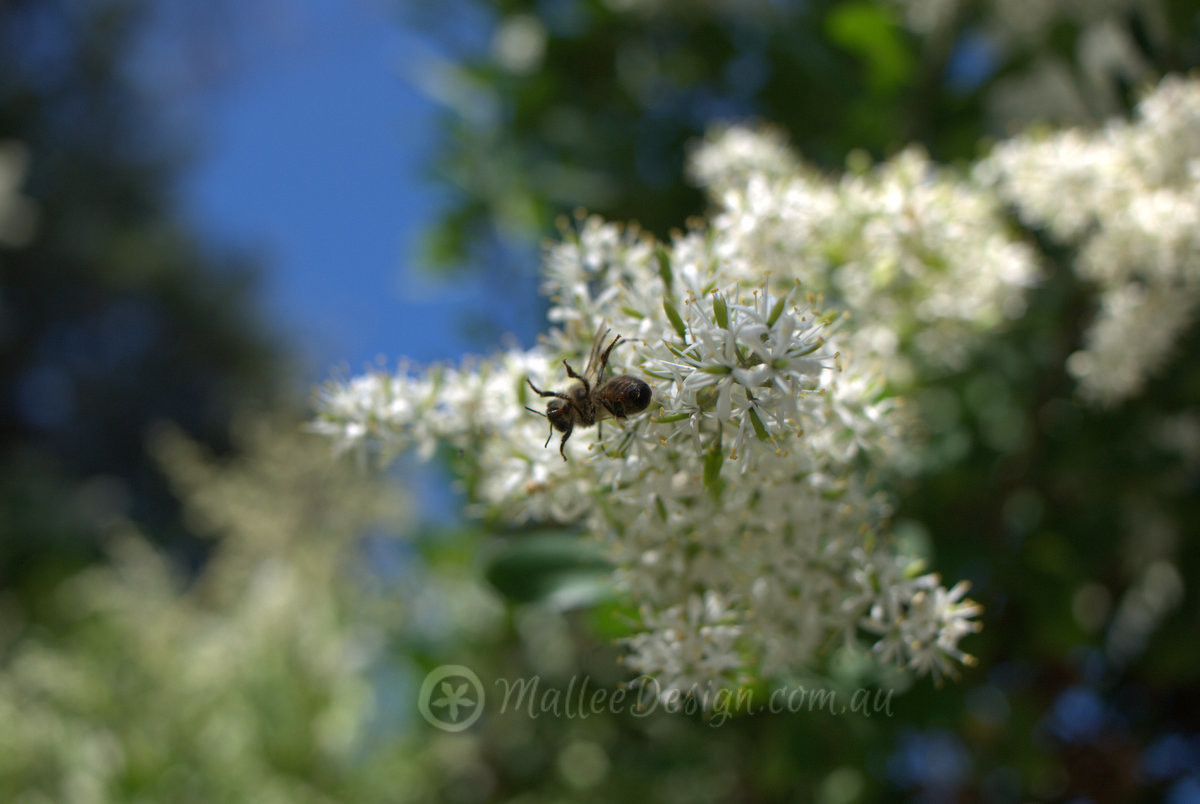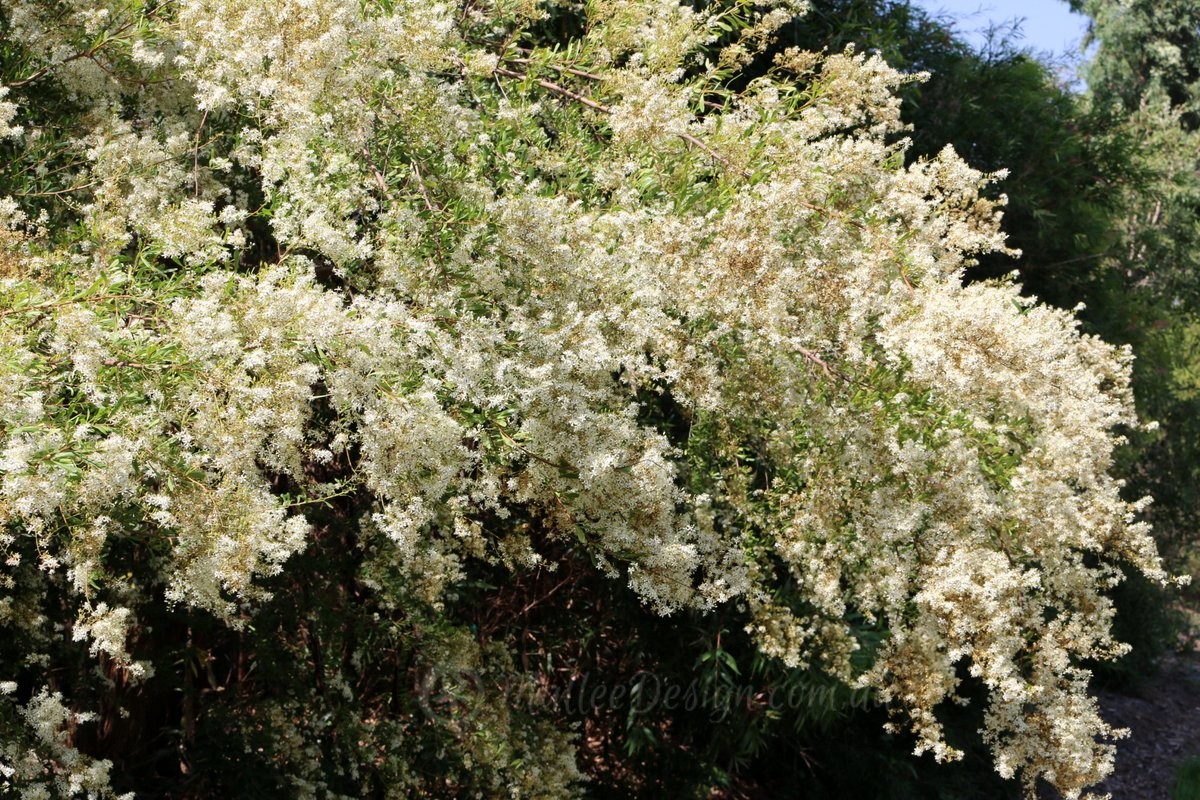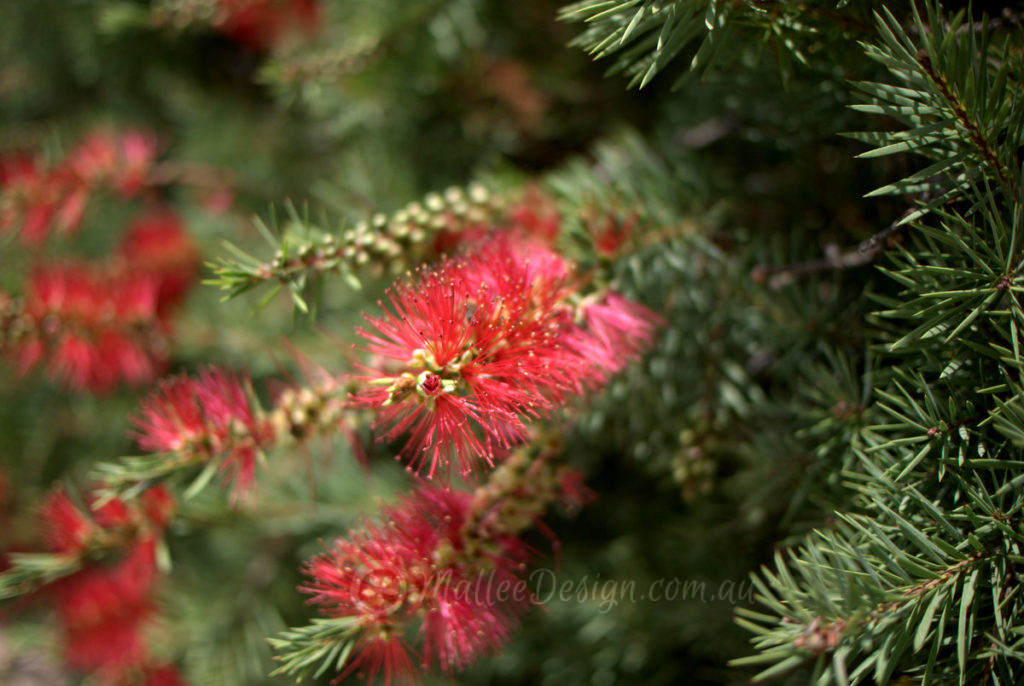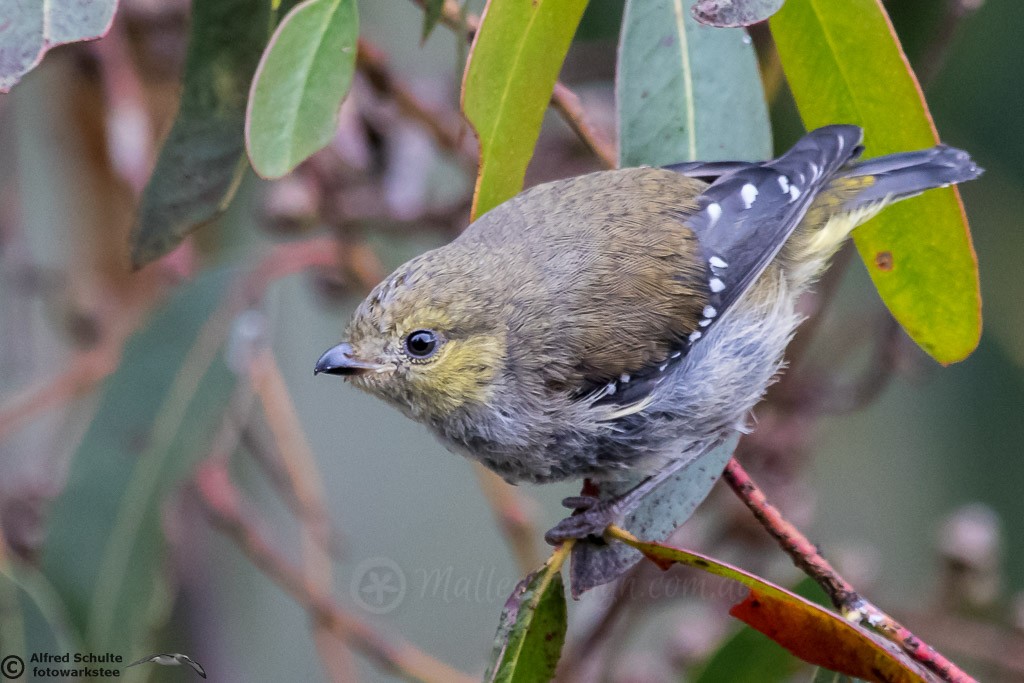All hail sweet Bursaria! this native plant is a superstar performer in a native habitat garden fulfilling so many critters requirements and needs. I have been collecting images of Bursaria spinosa for about 10 years now, always looking for a flattering angle and light, it is not a particularly showy plant if not in flower, ensuring it is only photogenic in Summer. The Summer just gone was a wonderful flowering season for Bursaria and the images below were taken in Victoria, Tasmania and NSW.

Bursaria spinosa can be found from Tasmania all along the eastern seaboard and inland somewhat too. It grows well as an understory shrub but will also grow out in the open in dry Eucalypt forest as can be seen in the image above.

If grown out in the open it will become a small tree but is mainly seen as a large shrub growing from 2-4 metres high. Bursaria spinosa is not so fussy about soil but responds well to a bit of extra moisture in the drier months and looks lovely with regular pruning.

The Summer flowers cover much of the shrub and have a sweet honey perfume which attracts bees and butterflies. This species is important in the conservation of the Eltham Copper Butterfly in Victoria and they were highly visible wherever I saw Bursaria in the lower Snowy mountains near the NSW and Victorian border.

Not only is Bursaria important for attracting insects, it also makes an excellent habitat plant for small birds, who can hide in the dense prickly branches and feed off the insects within the shrub.
Bursaria spinosa attracts insectivorous birds and is a favoured nesting site for the Double-barred Finch, Wrens also commonly nest in the shrub and the fruit is enjoyed by the Pilotbird.

I would recommend planting Bursaria spinosa in any garden where attracting wildlife is important, it can also be used as a barrier plant to stop unwanted visitors to your garden two legged and four 😉









Leave a Reply